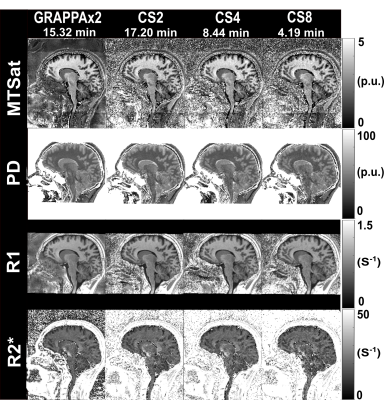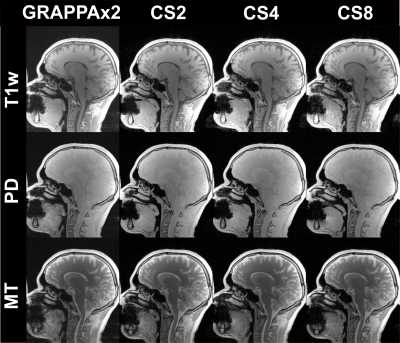Arun Joseph1,2,3, Quentin Raynaud4, Antoine Lutti4, Tobias Kober5,6,7, and Tom Hilbert5,6,7
1Advanced Clinical Imaging Technology, Siemens Healthcare AG, Bern, Switzerland, 2Translational Imaging Center, Sitem-Insel, Bern, Switzerland, 3Departments of Radiology and Biomedical Research, University of Bern, Bern, Switzerland, 4Laboratory for Neuroimaging Research, Department for Clinical Neuroscience, Lausanne University Hospital and Lausanne University, Lausanne, Switzerland, 5Advanced Clinical Imaging Technology, Siemens Healthcare AG, Lausanne, Switzerland, 6Department of Radiology, Lausanne University Hospital and University of Lausanne, Lausanne, Switzerland, 7LTS5, École Polytechnique Fédérale de Lausanne (EPFL), Lausanne, Switzerland
1Advanced Clinical Imaging Technology, Siemens Healthcare AG, Bern, Switzerland, 2Translational Imaging Center, Sitem-Insel, Bern, Switzerland, 3Departments of Radiology and Biomedical Research, University of Bern, Bern, Switzerland, 4Laboratory for Neuroimaging Research, Department for Clinical Neuroscience, Lausanne University Hospital and Lausanne University, Lausanne, Switzerland, 5Advanced Clinical Imaging Technology, Siemens Healthcare AG, Lausanne, Switzerland, 6Department of Radiology, Lausanne University Hospital and University of Lausanne, Lausanne, Switzerland, 7LTS5, École Polytechnique Fédérale de Lausanne (EPFL), Lausanne, Switzerland
We
implemented compressed sensing for quantitative MRI with the Multi Parameter Mapping
protocol. We present qMRI estimates obtained using a range of acceleration
factors, leading to four-fold acquisition time reduction while keeping
parameter variations per brain structure below 7.3%.


